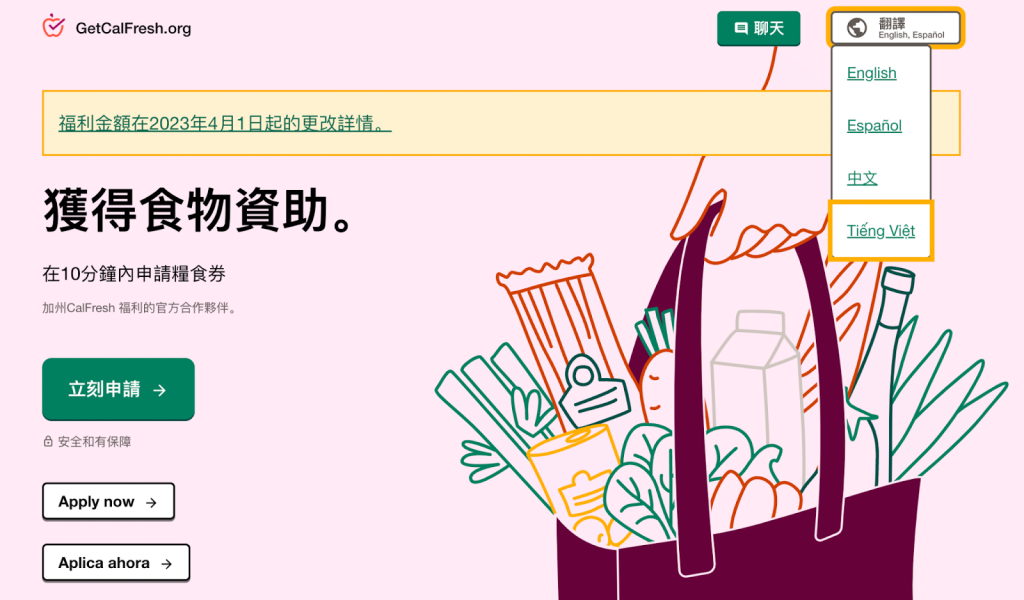Agencies at all levels of government provide information and services in multiple languages — whether it’s helping recent immigrants register their kids for school, providing foreign visitors with information about transportation, or an endless list of other functions.

If your government is one of them, have you done any comparative research on the experiences and outcomes of people accessing your services or information in these different languages? If not, this may be an opportunity to find ways to better serve some populations that are having challenges fully accessing your information and services today.
Case Study: Exploring the Experiences of Applicants in Three Languages
GetCalFresh is a website that helps people apply for SNAP benefits in California, and is a service delivered by Code for America through a partnership with the California Department of Social Services. It offers options to apply in multiple languages.
Data showed that “despite the availability of Spanish and Chinese application options, approximately 40% of Spanish-speaking clients, 56% of Mandarin-speaking clients, and 68% of Cantonese-speaking clients were applying in English — not their preferred language.” This was especially worth exploring in more detail due to significant under-enrollment in the program among many in these populations; for example, available data showed that 74% of Cantonese speakers and 84% of Mandarin speakers who were eligible for the program were not enrolled.

The Code for America team wondered: “Why are so many people applying in English even though they prefer to speak another language? What does this tell us about language accessibility in our products?” So they did more detailed research — carried out by native speakers — on the experiences of Cantonese, Mandarin, and Spanish speakers.
The team’s research uncovered a number of issues. For example, one Cantonese-speaking client expressed confusion about terminology: “It requires a lot of effort and time for me to digest and fully understand written Chinese. I need to read each word and think about what it means. The application asks about employer info. I couldn’t understand 僱主 (employer) in written Chinese, because we say 老細 (boss [less formal]) in Cantonese.”
Many of the issues the team found were about broader issues and not necessarily the website itself. Still, by doing this type of research, you can surface key insights and identify potential areas for making improvements to better serve people.
Do It Yourself
This type of analysis is a great example of how you can use quantitative and qualitative research together:
- Finding data about the experiences of people interacting with your services in different languages can highlight if certain populations in particular might be having challenges.
- By using qualitative research methods such as interviews, you can then learn the nuance behind the numbers.
- Equipped with these insights, you can then try to find opportunities to make changes that improve access for your target populations, then test them to see if they make a difference.
Government services are intended to help everyone, not just a certain subset of people. Researching and tracking the experiences and outcomes of the different types of people you’re trying to serve can help you build systems that aim to meet the needs of everyone.
Greg is the Associate Director for Human-Centered Government at Code for America, where he is leading efforts to support public servants with resources and training on the organization’s principles and practices for how government can and should serve the public in the digital age.





Leave a Reply
You must be logged in to post a comment.